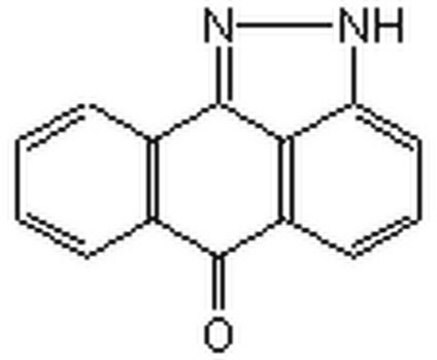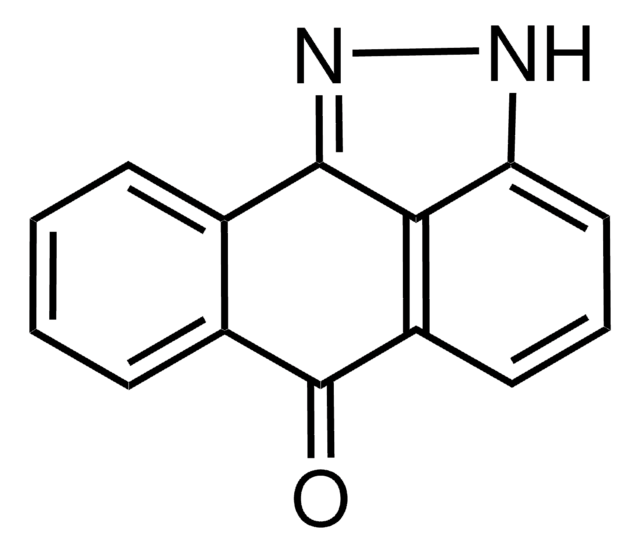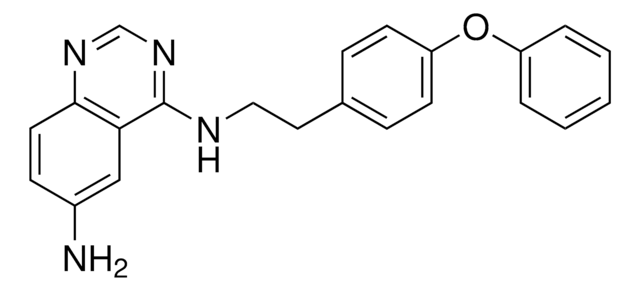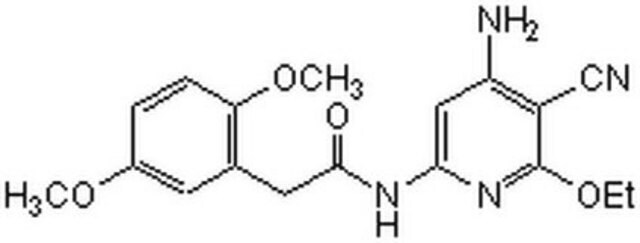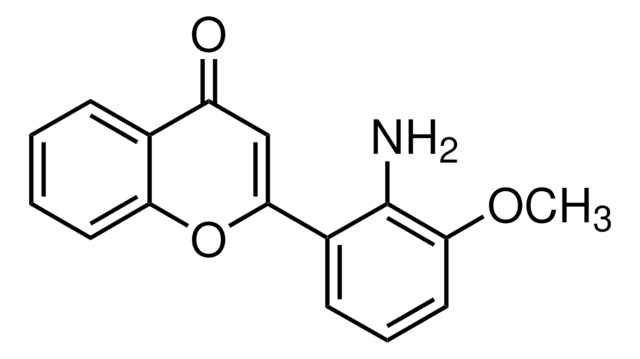420116
JNK Inhibitor I, (L)-Form, Cell-Permeable
The JNK Inhibitor I, (L)-Form, Cell-Permeable controls the biological activity of JNK. This small molecule/inhibitor is primarily used for Phosphorylation & Dephosphorylation applications.
同義詞:
JNK Inhibitor I, (L)-Form, Cell-Permeable, c-Jun NH₂-terminal kinase, SAPK Inhibitor I, (L)-JNKI1, ( L)-HIV-TAT₄₈₋₅₇-PP-JBD₂₀, H-GRKKRRQRRRPPRPKRPTTLNLFPQVPRSQDT-NH₂
登入查看組織和合約定價
全部照片(1)
About This Item
經驗公式(希爾表示法):
C168H293N67O42
分子量::
3923.55
分類程式碼代碼:
12352200
NACRES:
NA.77
推薦產品
品質等級
化驗
≥97% (HPLC)
形狀
lyophilized solid
效力
1 μM IC50
製造商/商標名
Calbiochem®
儲存條件
OK to freeze
desiccated (hygroscopic)
顏色
white
溶解度
water: 2 mg/mL
運輸包裝
ambient
儲存溫度
−20°C
一般說明
A cell-permeable, biologically active peptide consisting of a carboxyl terminal sequence derived from the JNK-binding domain (JBD) and an amino terminal peptide containing the HIV-TAT48-57 sequence. Blocks c-Jun NH2-terminal kinase (JNK) signaling by preventing the activation of the transcription factor c-jun (IC50 ~ 1 µM). This effect appears to be due to inhibition of phosphorylation of the activation domains of JNK. Contains the minimal 20-amino acid inhibitory domain of islet-brain (IB) that is shown to be critical for interaction with JNK linked to the 10-amino acid HIV-TAT48-57 sequence as a carrier peptide and two proline residues as spacer. Inhibits IL-1β-induced c-jun and c-fos expression in insulin secreting βTC-3 cells and offers protection against apoptosis. Does not affect insulin secretion and has no effect on either ERK 1/2 or p38 activities.
生化/生理作用
Cell permeable: yes
Primary Target
JNK
JNK
Product does not compete with ATP.
Reversible: no
包裝
Packaged under inert gas
警告
Toxicity: Standard Handling (A)
序列
H-Gly-Arg-Lys-Lys-Arg-Agr-Gln-Arg-Arg-Arg-Pro-Pro-Arg-Pro-Lys-Arg-Pro-Thr-Thr-Leu-Asn-Leu-Phe-Pro-Gln-Val-Pro-Arg-Ser-Gln-Asp-Thr-NH₂
外觀
Supplied as a trifluoroacetate salt.
重構
Following reconstitution, aliquot and freeze (-20°C). Stock solutions are stable for up to 6 months at -20°C.
其他說明
Barr, R.K., et al. 2002. J. Biol. Chem.277, 10987.
Bonny, C., et al. 2001. Diabetes50, 77.
Bonny, C., et al. 2001. Diabetes50, 77.
法律資訊
Sold under license of U.S. Patents 6,043,083 and 6,410,693.
CALBIOCHEM is a registered trademark of Merck KGaA, Darmstadt, Germany
儲存類別代碼
11 - Combustible Solids
水污染物質分類(WGK)
WGK 1
閃點(°F)
Not applicable
閃點(°C)
Not applicable
分析證明 (COA)
輸入產品批次/批號來搜索 分析證明 (COA)。在產品’s標籤上找到批次和批號,寫有 ‘Lot’或‘Batch’.。
Renae K Barr et al.
The Journal of biological chemistry, 277(13), 10987-10997 (2002-01-16)
The c-Jun N-terminal kinases (JNKs) are a subfamily of the mitogen-activated protein kinases (MAPKs). Although progress in evaluating the functions of other MAPKs has been facilitated by the characterization of specific inhibitors, no JNK-directed inhibitor is commercially available. We have
C Bonny et al.
Diabetes, 50(1), 77-82 (2001-01-09)
Stress conditions and proinflammatory cytokines activate the c-Jun NH2-terminal kinase (JNK), a member of the stress-activated group of mitogen-activated protein kinases (MAPKs). We recently demonstrated that inhibition of JNK signaling with the use of the islet-brain (IB) 1 and 2
Pau Marfull-Oromí et al.
Methods in molecular biology (Clifton, N.J.), 2438, 287-301 (2022-02-12)
In vitro studies have provided valuable insights to the function and mechanisms in axon guidance. In this chapter, we will introduce the rodent "open-book" assay, pre- or postcrossing explant culture and the dissociated neuron culture. They have been used to
我們的科學家團隊在所有研究領域都有豐富的經驗,包括生命科學、材料科學、化學合成、色譜、分析等.
聯絡技術服務